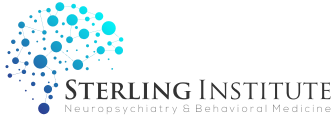Learn how Transcranial Magnetic Stimulation (rTMS) provides a non-invasive, effective treatment for chronic pain, reducing the burden of medication while improving the quality of life.

Understanding rTMS for Chronic Pain Management
An Overview of rTMS
Repetitive transcranial magnetic stimulation is a revolutionary non-invasive technique that exploits the potential of magnetic fields to stimulate nerve cells in the areas of the brain that are responsible for chronic pain. rTMS is a tried and tested form of treatment and has been in use for such conditions as chronic pain and fibromyalgia for over 25 years. rTMS is especially advantageous because it is not only effective but also remarkably safe to use; the technique is overwhelmingly well tolerated by patients with a much lower incidence of side effects than medication. Repetitive transcranial magnetic stimulation has minimal side effects, making it an appealing alternative to traditional strategies of pain management [3].
TMS takes advantage of the brain’s innate neuroplasticity, leading to an adaptative reorganization of neural pathways. Both sensory perception and emotional responses to pain are affected because of the involvement of multiple targeted pathways.
The long-lasting outcomes of rTMS intervention can be accounted for by synaptic plasticity with increases in interneuronal connectivity and the growth of new nerve cells. Changes in synaptic connections lead to long-term potentiation and long-term depression.
Conditions as neuropathic pain, fibromyalgia, migraines, and central post-stroke pain can be mitigated rTMS. For example, for patients with neuropathic pain, especially of central origin, high-frequency rTMS provide high levels of effectiveness in pain control. Non-invasive interventions that can influence neuropathic pain are particularly helpful as central pain syndromes are typically less responsive to other treatments.
Depression and anxiety disorders often accompany chronic pain, with pain worsening depression and depression worsening pain in a vicious circle. With the help of rTMS, we have a chance to work on the pain, the depression and the anxiety simultaneously breaking the circle in both directions.
Repetitive transcranial magnetic stimulation is a structured and session-based treatment that is usually carried out in approximately 20-minute segments. Most patients will benefit from a series of around 20 to 36 sessions.
If you are looking for treatment options that could be effectively used to augment your pain management regimen pain, the Sterling Institute offers comprehensive care including the use of both rTMS and psychotherapeutic counselling as well as medication management. Check the Sterling Institute find the strategy that best suits you.

